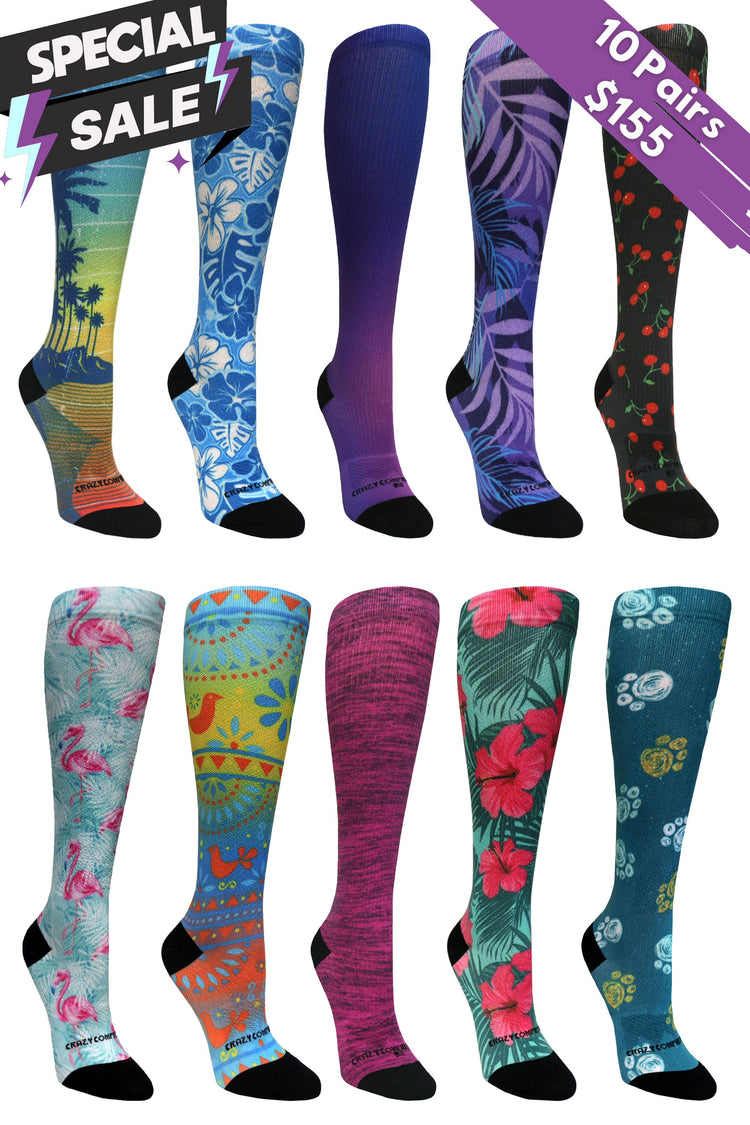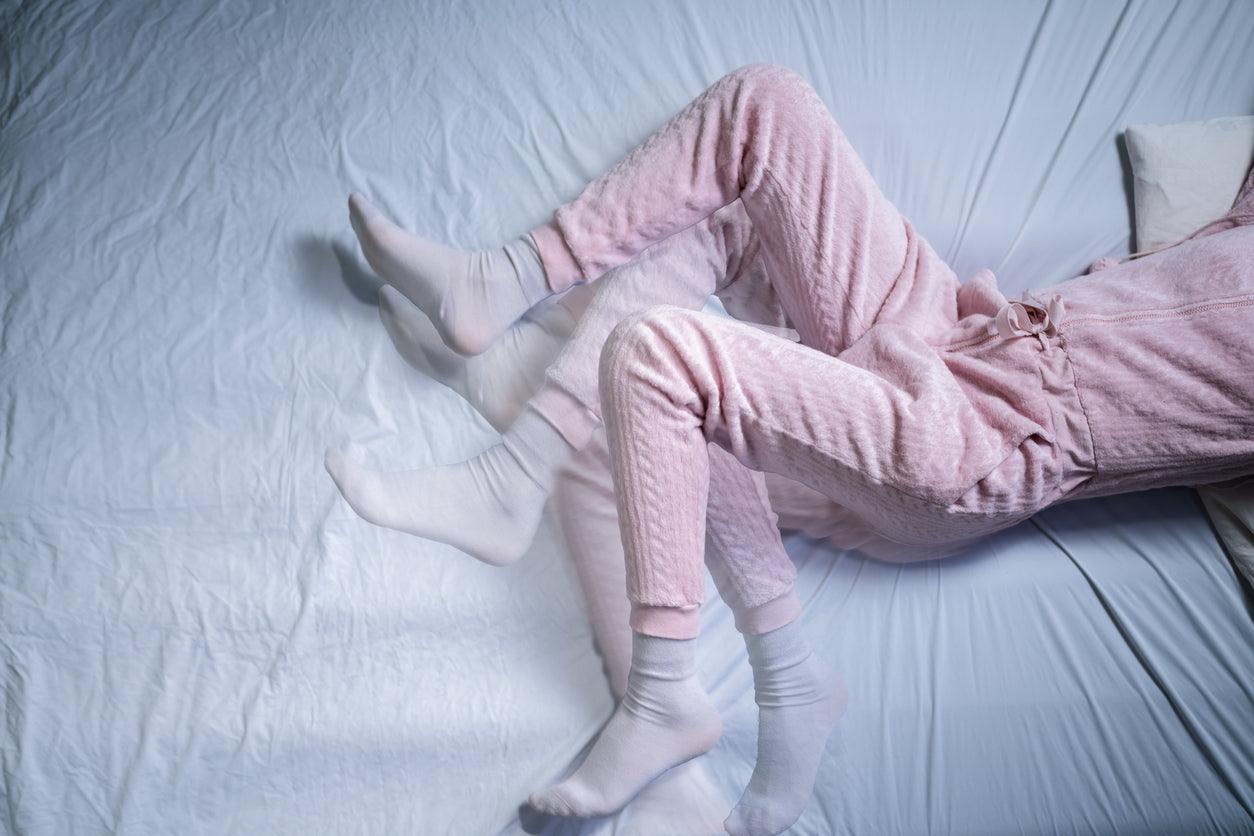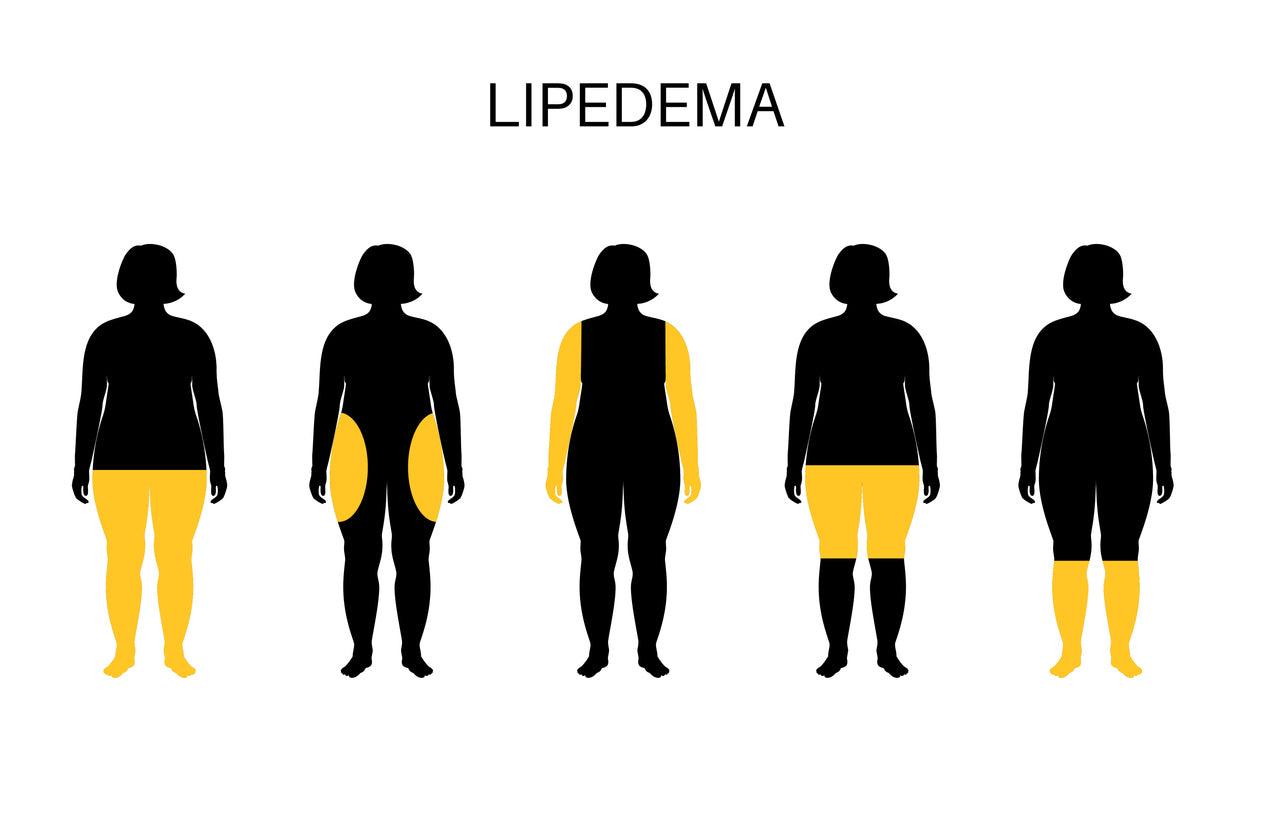According to the National Institute of Neurological Disorders and Stroke, restless leg syndrome can affect anywhere from 7 to 10 percent of the U.S. population. RLS (restless leg syndrome) occurs in both men and women, although women tend to suffer more than men. RLS is also known as Willis-Ekbom Disease.
If you've recently been diagnosed with RLS or have been living with a diagnosis for a while, you might be wondering if compression socks can help and how they can help.
We're excited as the medical community continues to discover more unique ways to use compression therapy for treatment that compression socks can help with restless leg syndrome. They may be a viable option for you. But how can they help? Let's dive in and learn together.
What Is RLS?
RLS or Willis-Ekbom Disease causes sufferers to experience unpleasant or uncomfortable sensations in the legs and the irresistible urge to move them. This sensation commonly begins in the evening or nighttime when a person is seated or lying down. The irresistible urge to move the legs can occasionally ease the unpleasant feelings, but it is only a temporary solution.
Anyone of any age can experience RLS symptoms, which can generally worsen as we age. It is highly disruptive to sleep, which can cause interference with daily activities and affect the quality of life. As RLS causes sleep disturbances, patients are often sleep deprived. Sleep deprivation is associated with depression, anxiety, heart disease, and obesity. RLS patients are at a greater risk for these issues.
RLS is classified as a sleep disorder due to symptoms triggered by resting and attempting to sleep. It is also classified as a movement disorder since the sensations force people to move their legs to find relief.
What Are the Symptoms?
RLS can feel a little different for every person. But the most common symptom patients describe is a tingling or ants crawling on their legs, while others say it is a feeling of pins and needles. In some cases, the feeling progresses beyond this to become painful. Other symptoms might include:
• Twitchy legs and feet
• Uncomfortable sensations: pins and needles, ants crawling, itching, pulling, aching, or throbbing.
• Powerful or irresistible urge to move legs and feet
• Sensations temporarily ease during movements
RLS Treatment
Should you suspect you suffer from RLS, the first step to treating it is to contact your doctor or health provider for an examination to determine if it is RLS or another health issue that may be causing the unusual leg movements. Your doctor may then guide you on treatment.
There's no clear consensus now as to what causes RLS. Some causes of RLS may be:
• iron deficiency
• Sleep apnea
• Excessive stress and tension
• Late-stage kidney disease
• Pregnancy
• Neuropathy
• Multiple sclerosis
• Parkinson's disease
• Genetic components (a parent, sibling, child)
• Chronic diseases
• Medications
Your doctor may also advise lifestyle changes to help alleviate mild RLS symptoms and help you sleep better, such as avoiding tobacco, and alcohol, reducing caffeine intake and maintaining a consistent sleep routine that may help.
There are also several conservative therapy treatments, also known as " over the counter" (by ordinary purchase without prescription or license) that you can attempt to help manage your symptoms, such as compression socks.
How Compressions Socks Can Help RLS Symptoms
Unfortunately, there's no known cure for RLS; however, there are some treatments that can help ease symptoms. Whether your doctor has recommended compression socks, or you've decided to try them yourself, we have a massive variety of fun, colorful, and stylish compression socks for you. The best compression to start with is a 15-20 mmHg gradual range. This range provides a moderate level of compression and all the benefits without being uncomfortable or too restrictive.
Gentle compression is excellent in assisting your body in increasing blood flow to your legs and feet and creating a massaging effect on the leg muscles. Improving circulation to your legs allows the tissues to take in more nutrients, eliminate waste, and take some of the strain off the circulatory system that works hard to push the blood back upwards.
Along with the benefit of increased blood flow and gentle, graduated pressure, compression socks also help prevent and decrease leg swelling. These may benefit RLS symptoms by improving sleep quality due to constant gentle pressure and increased oxygen reaching the legs.
Tips and Tricks to Combine with Compression Therapy
Massage
Many who suffer from RLS have found significant relief with a regular leg massage. In combination with using compression therapy and other doctor-recommended treatments. Many patients report that having more relaxed leg muscles has lessened or relieved symptoms, improving their sleep experiences. Moderate pressure during a leg massage is best to relax leg muscles, and after the massage, putting on compression socks can give the right amount of gentle massage action overnight to help those with RLS rest longer.
Warm or Cold Therapy
Before bed at night, consider taking a warm, relaxing bath to soak muscles and attempt to relax the mind.
For severe RLS symptoms, alternating between warm and cold compresses or packs may bring relief. Hot or cold therapy can reduce the severity of sensations and promote better blood flow. Additionally, this introduces a new sensation to the brain to process, distracting from the uncomfortable RLS symptoms.
While there is no current cure for RLS, compression therapy in the form of self-massage, hot and cold, and compression socks can decrease the severity of this painful disease. Combining the recommendation of your doctor and the regular use of compression socks may begin a more positive direction toward better sleep health which can, in turn, help manage your symptoms.
At Crazy Compression, we are 'crazy' about the benefits compression socks bring to our daily lives and how they can help us experience improved wellness. We love showing the world the difference a good pair of socks can truly make, and we hope we've been able to help improve your life today!
"Best socks! They fit perfectly!"
I'm always on my feet, and these socks have been a game-changer. They fit perfectly, provide great support, and help prevent swelling. I've even recommended them to my patients. If you're looking for a good pair of socks, these are the ones to get!
Cindy R | Mom & Nurse
"Best socks! They fit perfectly!"
I'm always on my feet, and these socks have been a game-changer. They fit perfectly, provide great support, and help prevent swelling. I've even recommended them to my patients. If you're looking for a good pair of socks, these are the ones to get!
Cindy R | Mom & Nurse
"Best socks! They fit perfectly!"
I'm always on my feet, and these socks have been a game-changer. They fit perfectly, provide great support, and help prevent swelling. I've even recommended them to my patients. If you're looking for a good pair of socks, these are the ones to get!

































Leave a comment
This site is protected by hCaptcha and the hCaptcha Privacy Policy and Terms of Service apply.